
Greer is a city in Greenville and Spartanburg counties in the U.S. state of South Carolina. The population was 25,515 as of the 2010 census and had risen to an estimated 33,373 as of 2019. The city of Greer is located in Greenville County. It is part of the Greenville–Anderson–Mauldin Metropolitan Statistical Area. The city is additionally part of the Greenville-Spartanburg-Anderson, SC Combined Statistical Area in Upstate South Carolina.
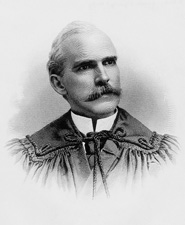
Joseph Haynsworth Earle was a United States Senator from South Carolina.
Elias Earle was a United States Representative from South Carolina. Born in Frederick County in the Colony of Virginia, he attended private school and moved to Greenville County, South Carolina, in September 1787. He was one of the earliest ironmasters of the South, and prospected and negotiated in the iron region of Georgia.
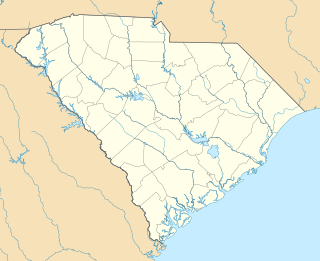
Tigerville is an unincorporated community and census-designated place in Greenville County, South Carolina, United States. As of the 2010 United States Census the population was 1,312. It lies 12 miles (19 km) north of Taylors, 10 miles (16 km) northeast of Travelers Rest, and 14 miles (23 km) northwest of Greer. North Greenville University, a private institution of higher education affiliated with the Southern Baptist Convention, is located in Tigerville. The community is part of the Greenville–Mauldin–Easley Metropolitan Statistical Area.
Taylor House or Taylor Mansion or variations may refer to:

Broad Margin is the name given to the private residence originally commissioned by Gabrielle and Charlcey Austin. It is located in Greenville, South Carolina, was designed by Frank Lloyd Wright and was built in 1954. It is one of two buildings designed by Wright in South Carolina.

Christ Church (Episcopal) is an Episcopal church in Greenville, South Carolina, United States. which was consecrated in 1854. The church and its courtyard are listed on the National Register of Historic Places as Christ Church (Episcopal) and Churchyard. It is the oldest organized religious body and the oldest church building remaining in Greenville.
Earle House may refer to:
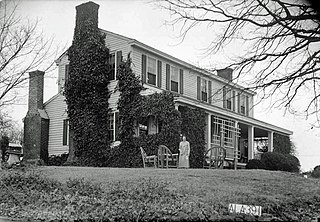
The James Greer Bankhead House, also known simply as the Greer Bankhead House and Forest Home, is a historic house in Sulligent, Alabama. It was added to the National Register of Historic Places on February 13, 1975. It is the only site listed on the National Register in Lamar County.

The Corner Packing Shed, in Frogmore, South Carolina, is a historic packing house on St. Helena Island that was built in 1930. It was listed on the National Register of Historic Places in 1988.
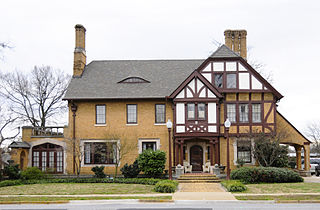
The Davenport House is a Tudor Revival house built in 1921 in Greer, South Carolina The house was listed on the National Register of Historic Places in 1999.
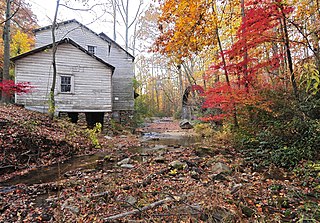
Gilreath's Mill is located on South Carolina Highway 101, near the town of Greer, South Carolina. The 2 1⁄2-story mill which sits on stone pillars was likely built ca1814, however, records can only confirm its existence as far back as 1839. It is one of the few remaining original mills that once provided staple foods and provided a place for rural residents to congregate.

Greer Downtown Historic District is a national historic district located at Greer, Greenville County, South Carolina. The district encompasses 40 contributing buildings constructed from ca. 1900 to ca. 1940, with the majority constructed between 1910 and 1930 in the central business district of Greer. They are largely two-story brick commercial structures. Notable buildings include the First National Bank of Greer, Planters Savings Bank, R. L. Merchant Building, Bailey Building, Bailes-Collins Department Store, and Davenport Building.

Southern Bleachery and Print Works is a historic factory building in Taylors, Greenville County, South Carolina. Founded by former Furman University English professor Bennette Geer, and built by the J. E. Sirrine Company of Greenville, the mill operated between 1924 and 1965, with the last historic structure being built in 1952. The property consists of 15 contributing resources, including a main building, warehouses, a smokestack, a detached boiler room with smokestack, a filtration plant, and two ponds. The bleachery acquired unfinished goods produced by other textile mills and converted them by bleaching, dyeing, and finishing into material used to manufacture clothing and other items. A small mill village, including Baptist and Methodist churches, was established nearby, and many mill houses continued to exist into the 21st century.

Old Pickens Jail, also known as Pickens County Jail, is a historic jail located at Pickens, Pickens County, South Carolina. It was built in 1903, and is a two-story, brick building with a two-story crenellated tower. It was expanded in 1928 to provide additional space for the cellblock. The jail closed in August 1975, and has since been used as a historical museum and art gallery.

Earle Town House is a historic house in Greenville, South Carolina. It was listed in the National Register of Historic Places on August 5, 1969, and is included in the Col. Elias Earle Historic District.

Whitehall is a historic home located at Greenville, South Carolina. It was built in 1813 as a summer residence by Charlestonian Henry Middleton on land purchased from Elias Earle. Whitehall served as Middleton's summer home until 1820. It is a simple white frame structure with shuttered windows and wide first and second story galleries, or piazzas, in the Barbadian style.

Col. Elias Earle Historic District is a national historic district located at Greenville, South Carolina. It encompasses 74 contributing buildings in a middle-class neighborhood of Greenville. The houses primarily date from about 1915 to 1930, and include Neoclassical, Colonial Revival, Tudor Revival, and bungalow styles. The district was originally part of the estate of Colonel Elias Earle, a prominent early-19th century Greenville citizen. The Earle St. Baptist Church is located in the district.

West End Commercial Historic District is a national historic district located at Greenville, South Carolina. It encompasses 15 contributing buildings in Greenville's second "downtown." The commercial buildings primarily date from about 1880 to 1920, and include examples of Victorian commercial architecture. Notable buildings include the American Bank, Alliance and Mills & McBayer Cotton Warehouses, Indian River Fruit Store, Pete's Place, Bacot's West End Drug Store/Stringer's Drug, Furman Lunch, and Greer Thompson Building.



















